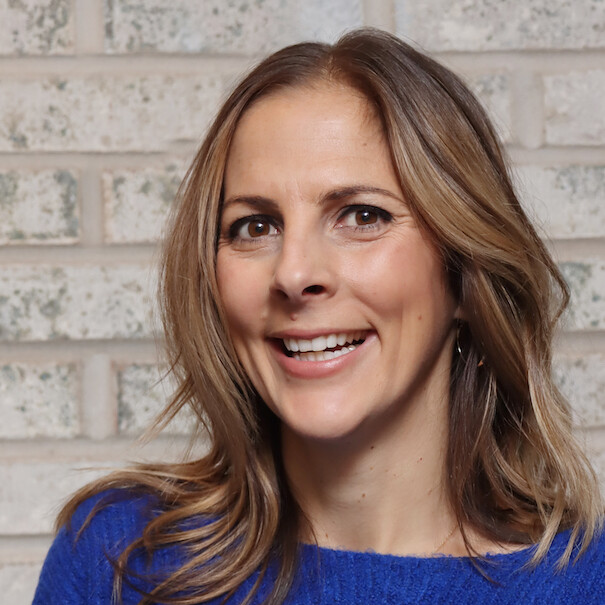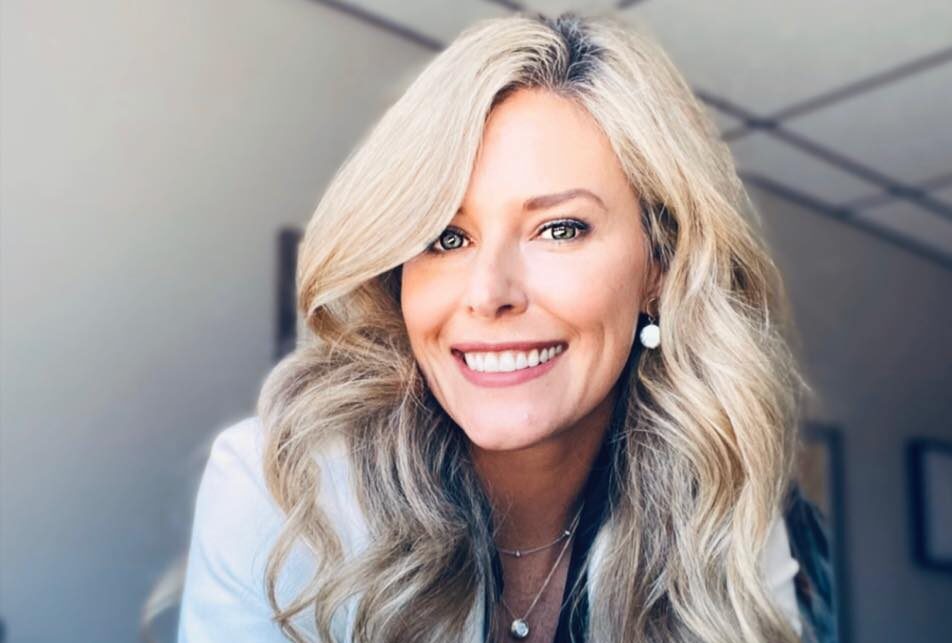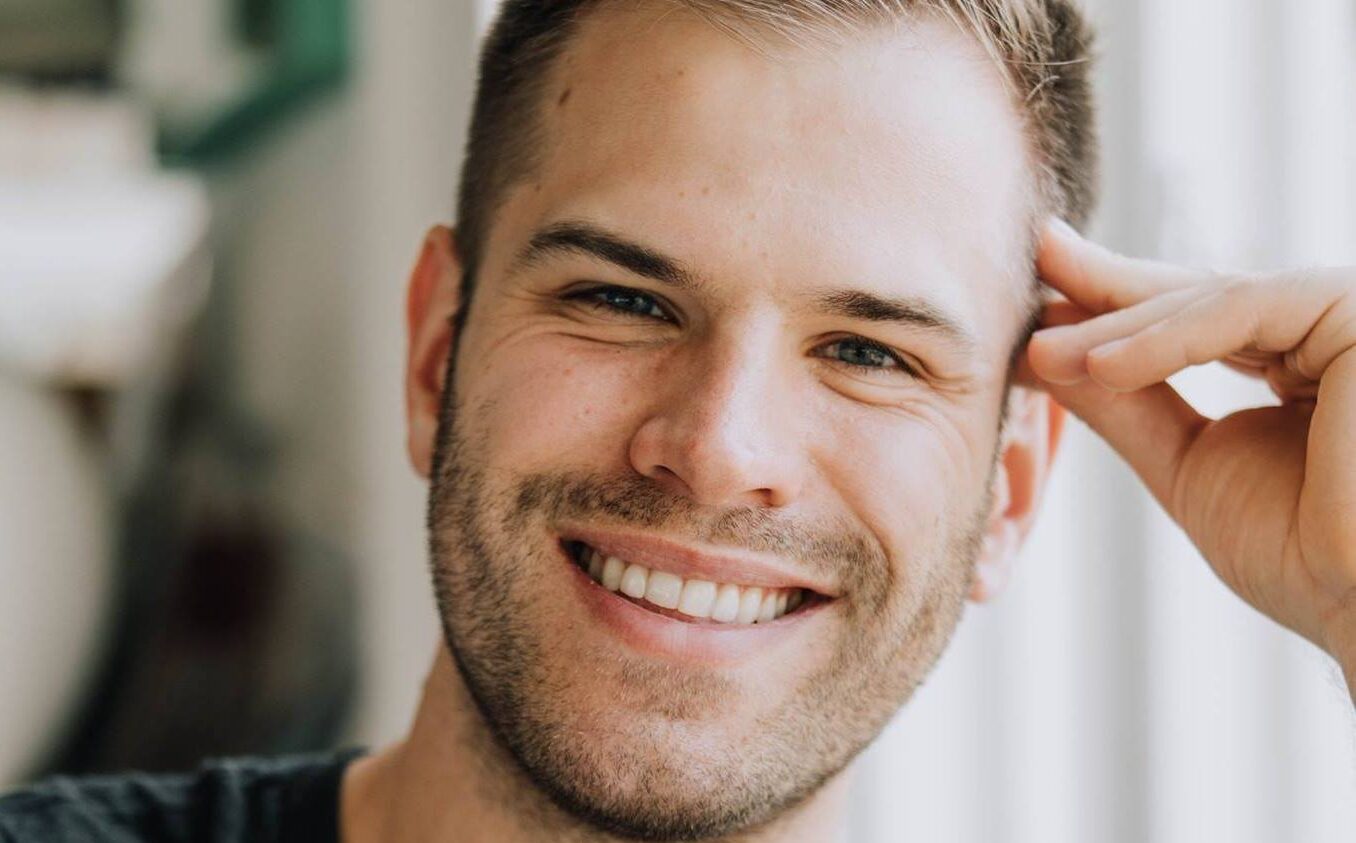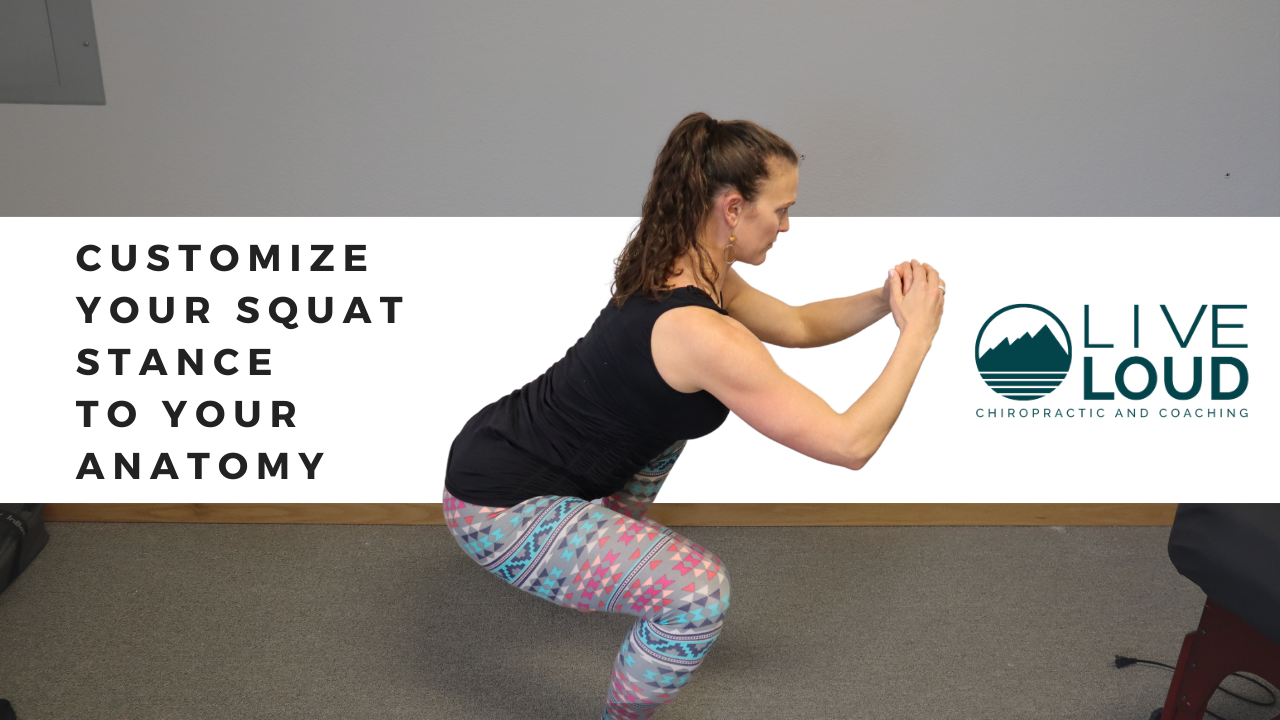Live LOUD Life PodcastLafayette Colorado
Episode 72
Progressive Play, Developmental Milestones & Pediatric Physical Therapy With Nicole Schremp PT, DPT, PCS
With Dr. Antonio Gurule
How do you know if your infant or child is progressing appropriately?
You want the best for your kids and while some would argue not hitting certain milestones are not an issues, addressing these issues earlier than later will help the gain strength and confidence to interact with other children as they grow in any situation
Episode Highlights
What are developmental milestones?
What are some of the ways a pediatric physical therapist can help?
How is pediatric physical therapy different from what is considered “standard” physical therapy?
Why is “play” considered to be so important?
Nicole Crippen Schremp, PT, DPT, PCS

Background:
- Mother
- Doctor of Physical Therapy
- Pediatric Pediatric Specialist
Check Out Some of Our Other Blog Posts and Podcast Episodes
00:09
Alright guys, welcome back to another episode of the Live LOUD Life podcast, I am with Nicole Schremp. She is a pediatric physical therapist, we just wanted to have a conversation and chat around what really what, you know, pediatric PT could look like some of the common things to look for, that might indicate or warrant, you know, consults or a conversation with a pediatric physical therapist. She’s, she’s at Children’s Hospital here in Denver today, for those of you who are local, and want to have a conversation, but I’ll let you introduce yourself, talk a little bit about you know, your history, what you what drew you to Pediatric Physical Therapy, so on and so forth. Awesome.
00:55
Well, thank you so much for having me, it’s an honor. Um, so as we talked about, I am pediatric physical therapist. So I completed my doctorate physical therapy at the University of Colorado. And while I was there, I actually had my first clinical in pediatrics and really had no idea what this field was I came into school thinking I was going to go into sports. And during the first clinical, I literally fell in love with the population. I have always had this motherly instinct and loved like babysitting and being with kids. And then I went, I found out PT and I get to be with play with kids all day, I just, it was wonderful. I continued to explore different avenues throughout school. However, kind of circled back to my last clinical, I went down to Texas Children’s and was inpatient there. And it really just solidified that I wanted to work with pediatrics. Knowing that I also knew how much more there was to learn, I was like, we only got so much when we were in school. So I applied and was able to complete my pediatric residency after I graduated, so that just gave me so much more exposure and experience in all different settings. It was a 13 month program that just finished last July. So I feel so fortunate to have continued my learning and every day, I just have more more questions. And love, literally love what I do.
02:35
That’s amazing. So when now, at least for me, and I think for most people, when they hear physical therapists, they usually think about, well, a something hurts and or post surgical. Right. So like I had surgery. And so let’s go to a physical therapist. So how would this? How would this conversation differ? And obviously kids do get injured and unfortunately have to go through surgery and things where that would be applicable. But my understanding is your role is separate from those Correct?
03:06
Yeah, that is correct. So I do a lot more with the developmental side and children. As a pediatric physical therapist, just broadly, we work with children and families, we want to assist the child in reaching their maximum potential in whatever capacity is the goal is that they can be active participants like in their home, in their school and in their community. So we want to make those everyday activities easier for kids. This can range from a child who might not be hitting their milestones. As the CDC puts them out there, we know that all kids have different trajectories in development. But sometimes, some kids need a little bit more help to start rolling or walking along those lines. And that’s more of that early intervention through the hospital. Now I am in a more developmental role. So children that have longer term care in the hospital, they can’t leave for one reason or another. I am helping them with those opportunities, giving them more opportunities to work on their city and and they’re rolling and all of those foundational moments and movements that we need later in life.
04:25
So obviously, in a similar field and understanding this but for for listeners. And we had on I had a conversation via messenger with a pediatrician at one point when the CDC took out crawling as a necessary developmental milestone. We’re not gonna get into the details of what the conversation was. But why is why are rolling, crawling and these types of things foundational Are these importance for the listeners or parents, you know, people just like, Oh, it’s okay, they didn’t crawl, they’ll be okay.
05:06
Well, in a broad sense, we want kids to have opportunities, we want them to move and explore their environment. So whether it’s them developing strength or improving their range of motion, or crawling really helps develop those fine motor and all of those arches of the hands and helps open up our hands in preparation for different activities. So all of those different areas, I really want a child to develop that symmetrical strength and range of motion. And we also need to be able to weight shift our body when we’re little, which we don’t think about to move forward and back or side to side and be able to catch herself, which helps us start with that balance. It’s going to help develop core strength as we’re moving in and out of, you know, our bases support. So where do we feel really stable? But are we able to go out and go get something and then come back without falling? All of those different pieces are going to be really important to start developing for children. So that they can, when they’re older, be able to do what they want and move around? Well,
06:13
yeah, no, I think that’s such a good explanation of it. Because I mean, when you look at, and I’ve heard multiple people say this in a number of different ways, but but rehab, rehab, training, whatever that might be, is really just a an extension of training in general, because when you’re talking about adults, it’s really no different. The more exposure you have to certain things makes you well rounded and better able to handle situations.
06:39
Yeah, that’s it. That’s exactly it. It’s key after PTS that we play, we do so much play with children, we just are trying to give them opportunities to explore their environment that they might not be either getting because they have an injury or, or we have to teach families to help them really learn how they are involved in their child and how we can make these activities. Functional, and really fun. But parents are really the driving force behind who we collaborate with.
07:14
Oh, yeah, for sure. I mean, kids aren’t going to do it on their own right. So when, when you’re having let’s say, for instance, you’re you’re at a barbecue at a you’re at, you know, whatever else having a conversation with somebody, what are some of the things that you encourage people to to look out for that might indicate outside of a pediatrician saying, hey, it looks like we’re behind on certain things. Because with a lot of things, there’s silent or subtle markers or indications that something might be going on where obviously the better to intervene before it starts to develop into a obviously a poor pattern.
07:57
So that’s, you know, it’s a broad question, but also not so I think some different things, especially for thinking about a child and their development. So what does that zero to 12 months kind of look like when we’re supposed to be able to roll and be in our belly and lift your head and set all of those as kind of progressive to help us walk it and move. So some things that, you know, we’re looking for, we want a child to be when they’re on their back, like kicking their arms and legs against gravity, and like kicking them in a symmetrical pattern. So we have both arms and both legs are be able to move, they’re able to bend and straighten and bend and straighten. That’s not only showing, there’s the good range of motion, but it’s also showing they have some strength, they’re actually moving their body against gravity, which for them is a little bit heavier than it is, you know, for us. We’re also you know, thinking about if a child is standing, that they’re able to stand and kind of move their body side to side versus are they only standing on their left leg? Like, maybe they’re not strong enough to move back and forth? So some other pretty common ones that we’re hearing more about our children just do they only turn their head to one side? Is there a flatter spot on one side of their head? So that’s where you know, there’s some different indications of torticollis or plagiocephaly? Or, you know, those those more? I guess like, is a child just only looking one way? Or are we able to have full range of motion in our neck to look both ways? So I think those are some of the big things that we’re looking for. And some children just aren’t as motivated to move with others. So is that a child and if it is like that might be their personality, but how can we keep encouraging them to move and want to explore by giving them fun activities, or something that they really want to get to is a cause and effect toy really appropriate for them? So They hit something that lights up and they’re like, oh my gosh, I want to do that again.
10:04
Yeah, no, I mean, and that’s what’s so interesting too. I mean, part of a lot of this is just obviously general observation, right? Because a kid is not going to be able to dictate and tell you if something’s wrong, or if they feel unbalanced or pain outside of crying. But yet, I think just overall perception and awareness for our own bodies is something that a lot of us lack. So I think just paying attention is such a big important thing, not only to your own body, but also to the kids to see what, what seem what seems off, outside of, you know, more serious things. Why do some of these things occurred like, like a strengthen bounced, outside of like a, you know, a significant neural disorder, which would be obviously more prevalent, or I guess, more, more prominent? First, I want to see, how do these strength imbalances occur in kids, when you would think there’s like, well, they’re just a kid, shouldn’t they just be naturally doing these things?
11:05
Yeah, it can be a hard question. It can be some, you know, sometimes, kids, our families need them to maybe be in a carrier more, or they’re in their mercy more, or they’re not exploring as much, or sometimes they might just, we might always hand them something on their left side, not even thinking about it. But there were only handed on their left side, or sometimes, however, we lay them down, everything might always be on the right. So they might only be rolling to the right. So their strength in the, you know, some core muscles and our arms and neck muscles only in one direction. So sometimes it just might be things that we’re not even thinking about. But when it would, kind of back to what you were talking about, in terms of observation, so much of what I do my first session is just watching a child move. So the power of observation of seeing how, what are their movement patterns? How are they moving? Do they have a variety of movements, or some things that we run into in the hospital, we only walk in on one side of the room. So if a child’s head is always to one way, they might only be strengthening moving as they roll to the you know, left, because that’s where everyone is, that’s where action is. Which could be true at home with changing tables or crib, they might just environmentally get exposure more on one side than the other.
12:32
That’s a good point. Because as I’ve had this exact same conversation with individuals that have multiple monitors, that you know, it’s I have two monitors, but ones over here and they gotta catch in their neck because they’re doing they only look right, they never look left and or we just live in this world. We don’t look out and around to create more exposure. Do you? Now obviously, being a pediatric physical therapist, do you see any adults do you intervene with adults? And my my curiosity with that is and I’m not sure if you’ve heard I’m sure you have though, is DNS dynamic neuromuscular stabilization. A lot of that’s based on developmental patterns, where they use these principles to intervene even with adults and getting people back into developmental patterns to fix issues. Do you find benefit in what you’re doing with adults as well as exploring these developmental patterns?
13:26
That’s a great point. So I don’t I ever since graduation, I’ve really been focused on now are named pediatric. Yeah, I have heard of it. But I don’t feel like I can really speak to it right now. Because that’s not where gotcha I’d be shocked if I wouldn’t see. I wouldn’t find it valuable for them just because knowing what I know about kids. So that’s something that I yeah, I do really have my niche right now. Most of the time, sometimes there are more adults with congenital or more pediatric diagnosis that I see right throughout the hospital, but most of the time, I’m working with children more on that developmental side. So working on those, those early motor skills.
14:17
What’s the obviously there could be put with plagiocephaly separately in Georgia call us like a fairly early intervention. What’s kind of like the the, I guess, average range of kids ages that that you do see or is it is very broad and wide.
14:35
It’s very broad and wide. I think I most I guess if I had to pinpoint it would be like zero to probably five right now is most of what I’m seeing at the hospital. During my residency, I was I spent time outpatient and did do some sports, pediatrics. I also was in the school district at Cherry Creek, so I worked with first and second graders. I’m so I have had that early experience. So from that zero to three year old all the way up to you at 1920. Knowing that right now I’m back to the younger age group.
15:14
Now, for adults, when, interestingly enough, sometimes when we’re dealing with like a weakness issue, their body weight, as you had indicated for peds, which is different, obviously based based on the age, but their body weight is too much for them, is there a time where you’re, you’re using resistance training outside of their own bodyweight, ie, different modalities or bands or something like that?
15:42
When I was in the sports, kind of doing more ortho for one day a week, for those nine months, when I was in the residency, we definitely were using a lot of bands using different probably very similar modalities that you would use on the chiropractic front. But definitely ankle sprains or low back pain or rehab from a sports injury, all those things that I think when you think about physical therapy, and kind of where your mind tends to go
16:11
outside of that in your specialty of zero to five, it’s pretty much just exploration, crawling groundwork, so on and so forth.
16:18
Yeah, it’s a lot of like giving these children opportunities and making it fun and exciting. And like, it’s a lot of play, we want them to want to do the movements, like it’s, I will do some facilitation to help them get into certain positions. But we’ve found more and more research of just like that cause and effect of them doing it and we get really excited or like they roll up, we’re like, oh my gosh, that’s amazing. Or they roll and they get some reward on the other side, whether they see a book they see mom, or you know what that looks like. So a lot of it is just using the child and letting them explore their environment and that reward of clapping or you know, some of those things, so they get really excited. Do you
17:03
is there any? I’m sure there is benefits? I don’t know if it’s the questions asked correctly. But if you do intervene with it, but is there advantages to doing soft tissue work in any situation to help facilitate a you know, some massage or vibration to activate something
17:21
100% And I was just in a continuing education course over the weekend, looking at how breath really impacts the body’s movement and core and thinking about some of the children I work with have tricks and bent. So they’re the top of their breathing, you know, is impacted because they have that open hole. So what is what can you do for read mobilization or some soft tissue massage on the ribs to really help expand and improve breathing, which is also going to help in so many different ways?
17:56
That’s interesting. Yeah, that’s a really good point. What are what are a few things just, I mean, obviously, in our industry, there’s certain there’s certain things that we want people to, I guess Miss tuberous, if you will, but not even Mr. Buzz, just like what are a few things that you think you would you’re trying to get out that people that people should know, about Pediatric Physical Therapy?
18:24
Yeah, that’s a great question. I think the big thing that I want people to know is encourage your child to explore like, it’s okay to let them play on their own and be able to move around in their own environment. And it’s also okay, if you have some questions on things that might not seem right for your child to ask your pediatrician and really use them as partnership. If they’re, you know, think everything’s fine, and you just still have your like parent instinct that something’s going on, reach out to a PT or look into early intervention. If it’s if you’re zero to three years old, it’s something that would be a it’s really great service for children with any sort of delay to receive services in their home. So I would just, I would just say, if something doesn’t feel right at all, whether it’s, you know, your chiropractor or another PT or your pediatrician, and if you don’t get an answer, just continue to ask.
19:33
How might I mean, this is? This is such a funny question, I think, because we kind of get the same. For adults, it’s harder because creativity, especially in that type of setting is is harder to intentionally elicit. But But if play bass is so important, what things do you tell your parents Now granted, you’re seeing them in an intervention status, if you will? But what things do you encourage people to do? If clay base is so important? How do you encourage parents to help their kids play more at home?
20:09
Yeah, I so one thing is really just talking to parents, what is your routine at home? What is your day look like? And then how can we put little pieces into their day that you don’t really think about as therapy, but therapy, so say diaper changes is, is something that we’re really working on some for strings. So we want parents who After every diaper change to help the child bring their hands to their toes. So something you know, you’re already bringing your self, the child on their back. So we’re really working on touching our knees or our toes in that position, or did the child love bubbles, like, let’s play bubbles down the hall and see if we can encourage them to crawl to the bubbles or to stand up to pop the bubbles. Putting little squiggles on Windows to have them stay in there and just pull off the little swigs. It’s really a ton of core strength and balance and reaching. So there’s a lot of different play based activities that we can get really creative with, and really seen the big pieces like how does it fit into their life and their routine? I don’t want to give parents a laundry list of homework, I want to give them some things that they are like, oh, yeah, we basically do that. But I can tweak it this way. And that’s actually going to help their child their individualized program of whatever that child needs to get stronger, or more whatever, like developing those skills.
21:41
And I think that’s I think that’s such an important way of getting at it because we say something very similar, right is it’s like, oftentimes, what we’re doing is no different than what you’re already doing. But the intention of how you’re doing it just changes slightly. And that makes the world a difference.
22:00
Portal. That’s the I love that how you set that the intention? Yeah, that’s exactly it. We’re making it fun and enjoyable, but they’re just a little, there might be a little different tweak, to really help us get that result that we’re looking for, or the child is going to start doing something just a little bit different. And parents are like, Oh, my gosh, this is wonderful.
22:21
Yeah, yeah, that’s awesome. I think that I think, I think that’s all I think that’s amazing like to it, because obviously, there’s there’s extenuating circumstances of more serious conditions that require a lot more obviously, one on one, but for the general type of public of having these things, most kids are doing fine with it, because they have this natural exploration, but making it fun in in seeing the games can also highlight certain things. I mean, I know for our kids, we talk a lot about like, they naturally go, I’m gonna pretend like I’m a dog, and you’re seeing how they crawl or do all these other things. And you really start to see discrepancy, so on and so forth. So that’s, that’s a lot of great information. I honestly, I learned so much. I don’t have a lot of other follow up questions. I think this has been wonderful for me to share to give people an idea, especially not to, because I think there’s a number of great pediatricians out there. But I think a lot of times these in our world, these movement based things of what we find to be super important, sometimes just get swept under the rug, they’ll grow, they’ll grow out of it as what we commonly hear, right. But we, you know, my thought is, well, maybe, but we might as well optimize them so that they can be interactive with their peers at school at home.
23:46
Yeah, I think that’s the big piece, we just want the child to participate with their family, friends in school environments. And you’re right, they might grow out of, but they might not and why not get evaluated by, you know, whatever setting that is, if it’s, if it’s a PT like to have a PT just do an evaluation, see where they are some other ones that we hear a lot that they might grow out of is to walking. So definitely that’s one that I did bring up before but something to be on the lookout for. So anything a child does all the time that they their only way of moving W sitting into another one. So it’s okay if we’re you know, going in and out of it or using that to transition but if we can’t move outside of sitting, you know in a W position or we’re only looking into our head to one direction or only walking on those toes, it’s kind of when we get siloed that that might you know, something that we definitely want to look at it. We want just kids to move. We want that variety. We want them to just do different things in different ways.
24:55
That’s such a good that’s that’s a good point too, because I think I think it’s kind of hard to say They sometimes like, well, what’s normal is like, well, when you walk when you look at anybody walking, we all pretty much walk the same way. And when you see something else like, well, we kind of use general general common sense. Like that doesn’t seem natural to how everyone else moves or walks. Same with crawling or scooting. Yeah, they’re like, well, they get around fine. Well, yeah, cuz they can, like we’re the other example that we commonly use is like humans are very task oriented, goal driven, as you said, I want to do this because I get a reward. We’re no different. If the task is to run a mile, you’re going to figure out how to do it, regardless of its efficient or not,
25:42
right? Yep. And that’s it. Some kids, there’s so many different ways of crawling, if you like, look on the internet or research, there’s like, I mean, so many different ways, we would ideally like a child to hands and knees crawl, because they’re getting cemetry, they’re getting reciprocal movements, they’re strengthening both sides. Some of these other ways of crawling, the child is efficient, they’re getting around, but might only be strengthening one side, or they might be putting one side of their body in a less optimal position. So we want the reason they’re doing that as they figured out how to move and get that reward. But we want them to let them keep going. But we also want to strengthen and you know, work on whatever other piece there is to that?
26:25
Yeah. Well, I appreciate the time this has been this has been extremely helpful for me as well. And obviously good to always see like, what are what are certain things that are coming up that are like, hey, it’s always that’s a hard conversation to sometimes like, this doesn’t look normal. But it’s just it’s, it’s worth asking a few questions and knowing who to talk to. Is there. Is there anything else that you would like to leave people with that has come to mind that maybe I didn’t ask a question about,
26:55
you think that it, I really, just to circle back, let your child explore, be able to have fun and play inside outside all of those different areas. And just trust your instinct. If you feel like you want to ask them questions, please do?
27:12
How can how can people reach out to you? If they want to work with you or or anything like that?
27:19
Yeah, I would love to hear from you with questions or anything. So I have an email address that I’ll pass along that we’ll be putting this in the show notes. Nicole dot c that Trump dpt@gmail.com. It’s a little bit of a handful. So we’ll just put it in the show notes. Have it be there?
27:38
Well, perfect. I really want to appreciate you taking the time out of busy day and chatting with us and sharing your knowledge.
27:46
Awesome. Thank you so much. One last piece that I want to put in the show notes too. If you’re if you have questions on milestones, work, and the CDC has different avenues for milestone trackers and milestones. And then
28:02
for early intervention, because this does come up every now and then where would one reach out to or who should they who should they be researching or looking out to for those early intervention resources.
28:12
So early intervention is a federally mandated program. So it’s like support for an education for children, you know, developmental delays and their families. So it’s anyone from the zero to three, you can go on. And I think if you just type in early intervention, there’s different community center board. So you want to reach out to your community center board or ask your pediatrician for a referral.
28:39
That’s probably Yeah, so it’d be a pediatrician be a good resource early intervention. Yeah. That’ll come up. Yeah. Well, thank you so much. I really appreciate the time and chatting.
28:50
Thank you so much for having me.
–




